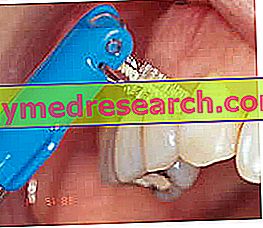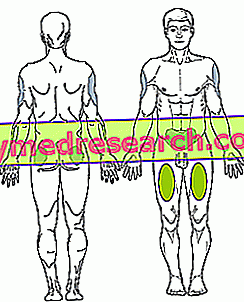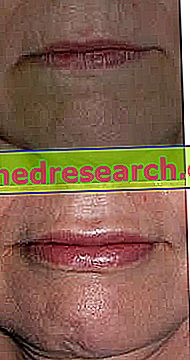Introduction
The toothbrush is a particularly useful dental device to remove plaque and food fragments trapped between tooth and tooth.

How to use it?
Learning the correct use of the brush is very simple, perhaps even easier to learn than the technique for the optimal use of dental floss, whose dexterity is acquired only after some applications. After fixing the small conical / cylindrical brush on its head, the brush is ready to be used.
Experts advise sliding the brush between the teeth before brushing: in doing so, the cleaning action of the toothbrush is facilitated. Furthermore, passing the brush before the toothbrush allows the active ingredients of the toothpaste (eg fluorine or bleaching agents) to reach even the interdental cracks.
Similar to dental floss, the brush must be slid into the gap between the tooth and the tooth: the horizontal movement (forward-backward) must be performed with extreme caution and just as delicacy to avoid traumatizing the gums unnecessarily.
In the upper arch the brush must be pushed from top to bottom, while in the lower one the movement will be opposite (from bottom to top). Its displacement, which must be horizontal, should create a slight friction between the walls of the teeth, so as to mechanically eliminate the plaque therein, while at the same time exerting a gum massage.
An excellent cleaning of the bacterial mat deposited between tooth and tooth requires to pass the brush at least three times for each interdental space.
After cleaning all the teeth with the brush, it is recommended to rinse the mouth vigorously with the mouthwash, better if enriched with fluoride. The mouthwash, in addition to refreshing the mouth, helps to improve the breath and strengthen the tooth enamel, while favoring the elimination of the fragments of plaque or food previously removed with the brush.
Teeth cleaning must be particularly meticulous if there are dental prostheses, fillings, capsules, or other areas of greater retention.
Frequency of use
Just like flossing, it is recommended to use the brush at least once a day, possibly before going to bed.
Used correctly and regularly, the life of the traditional brush does not exceed 10-15 days. In any case, if the bristles of its head begin to open and lose their elasticity, it is advisable to change the brush (or just the head if it was interchangeable) with a new one.
To keep them at their best, after each interdental cleaning it is advisable to keep the brush in a dry and hygienic environment, after carefully drying its bristles.
Advantages
The brush is an extremely advantageous tool for interdental cleaning: in addition to removing dirt in areas generally inaccessible to the toothbrush, it allows you to exercise a good gum massage. In a sense, the brush can be compared to the gum stimulator, aimed at encouraging the blood circulation of the gums between tooth and tooth. For this purpose, the brush - as well as the gum stimulator - is recommended for patients with retired gums.
Furthermore, the regular use of the brush prevents the formation of plaque and calculus in the interdental space, thus reducing the risk of dental infections such as tooth decay, gingivitis and abscesses. We remind you that an already formed deposit of tartar can be effectively removed only by scaling (professional dental hygiene).
Did you know that ...
Caries and dental infections in general tend to develop from the interdental spaces. From this consideration we understand how it is essential to always ensure an accurate and deep cleaning of the teeth. If not carefully cleaned, food and bacteria residues accumulate progressively in the interdental spaces, thus exposing to the risk of caries, toothache and gingival inflammation.
Disadvantages
Even the pipe cleaner has some disadvantages. This important tool for interdental hygiene is not indicated for patients who have particularly narrow interdental cracks, crooked teeth or dental malocclusion. In such circumstances, the use of the brush would irritate or traumatize the gums unnecessarily precisely because the very thin space between tooth and tooth hinders even the passage of the thin metal sheet on which the bristles are mounted.
The use of the brush is also contraindicated in the period immediately following the extraction of a tooth, since, in the following 5-7 days, the area where the operation was performed appears to be sensitive, swollen and painful. During this period, Petanto does not recommend the use of the brush or any other instrument for interdental cleaning in the teeth near the extraction point.



